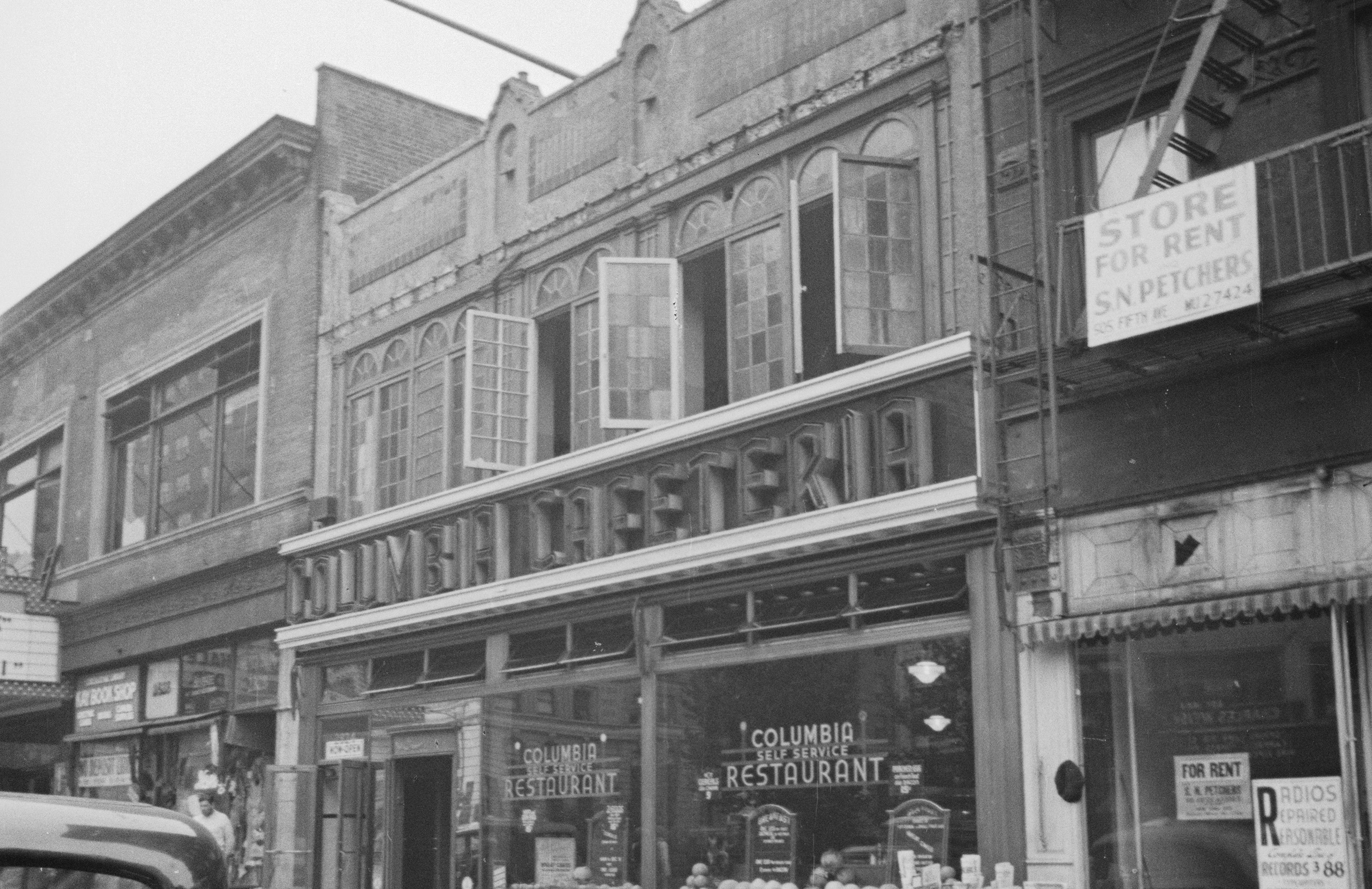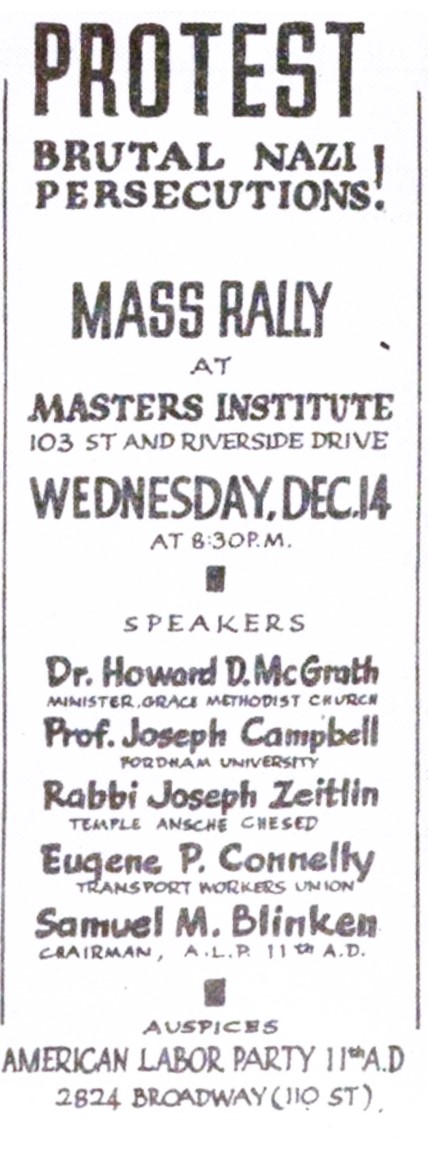
2824 Broadway
by Tom Miller
On May 22, 1911, George L. Slawson sold the two-story brick garage at 2824-2826 Broadway to Louis Kaplan. Four months later Kaplan hired architect Frederick Jacobsen to make $3,000 in improvements to the building. He would retain ownership until 1921, when he sold it to the United Cigar Stores Company. A year later, the firm leased the property to Samuel Rosenberg who had major changes in mind. On January 3, 1921, the New-York Tribune reported, “After extensive alterations are made the building will be used for restaurant purposes.”
Architect Harold E. Hall was hired to renovate the structure. His alterations, costing $3 million in 2022 dollars, resulted in a restaurant on the ground floor with a dance floor and seating on the second. The Trianon Restaurant advertised itself as a “family restaurant—kosher style.” The upstairs dining room was available for private gatherings. On January 13, 1926, for instance, The Columbia Spectator noted, “The Class of 1920 Engineers will hold another informal supper at the Trianon Restaurant, 2824 Broadway, New York City, on Tuesday evening, January 28, at 6:30.”
The Trianon Restaurant advertised itself as a “family restaurant—kosher style.”
Two competing Irish soccer teams dined together on July 20, 1927. The Advocate reported, “The week-end was full of sunshine for the Kerry champions. The visitors and the team that defeated them three times here in New York were brothers again at the Trianon Restaurant, 2824 Broadway, on Wednesday night last, where the Baron of Broadway acted as host to the football teams.” The Baron of Broadway, incidentally, was the charismatic John J. Hanley. Passionate about Irish freedom from England, he would be best remembered for knocking on the door of 10 Downing Street in 1955 and offering the Prime Minister $24 million to buy Northern Ireland and present it to the Irish Free State.
Change came in 1933 when William J. McNichol took ownership of the property. He hired architect Charles N. Whinston to remove the interior staircase and make the second floor a separate space, accessible by an exterior door on Broadway. The New York Sun reported on March 9 that a restaurant would remain on the ground floor, while the second floor would become a “club-room.” Whinston updated the exterior with new storefronts, a wall of colored-paned windows at the second floor, and a parapet that was his personal take on Art Deco
The ground floor became home to the Columbia Cafeteria, its bold neon sign stretching the width of the building. Upstairs was the American Labor Party’s 11th Assembly District headquarters. The space was as much about socializing as it was about politics. On January 22, 1938, for instance, The Advocate announced, “An entertainment will be held Saturday night, Jan. 22 under the auspices of the A.L.P. at their headquarters, 2824 Broadway. There will be Irish and American dancing.”
The political meetings and discussions that did take place here, however, were serious. The group organized a mass rally on December 14, 1943 at the Masters Institute on Riverside Drive to protest “brutal Nazi Persecutions.”
Around 1948 the second floor became home to the nightclub El Club Ateneo Cubana de New York. Here Cuban immigrants could dance to the music of their homeland. But not everyone was welcome. According to David Garcia, in his 2006 book Arsenio Rodriguez and the Transnational Flows of Latin Popular Music, the club discriminated “against Cubans and Puerto Ricans of color.” The club remained in the space at least through 1959.
The space was as much about socializing as it was about politics.
In the meantime, Otto Beyer had transformed the Columbia Cafeteria into the Columbia Lounge. An advertisement in 1958 touted, “Dinner, Drinks, No Cover. Lee Miller at the organ nightly.” At the time, however, its days were numbered.
In 1962 the ground floor was converted into a retail shop. The Department of Buildings noted the upper floor was to remain vacant. Then, in 1965 another restaurant moved in, the New Moon Inn. A second Chinese restaurant, Yung Yuan Szechuan Inn, took the second floor in 1976.
It all came to an end in 2003 when the entire corner of 110th Street and Broadway, including 2824-2826 Broadway, was demolished to make way for The School at Columbia University, an independent kindergarten-through-eighth grade school.
Tom Miller is a social historian and blogger at daytoninmanhattan.blogspot.com



